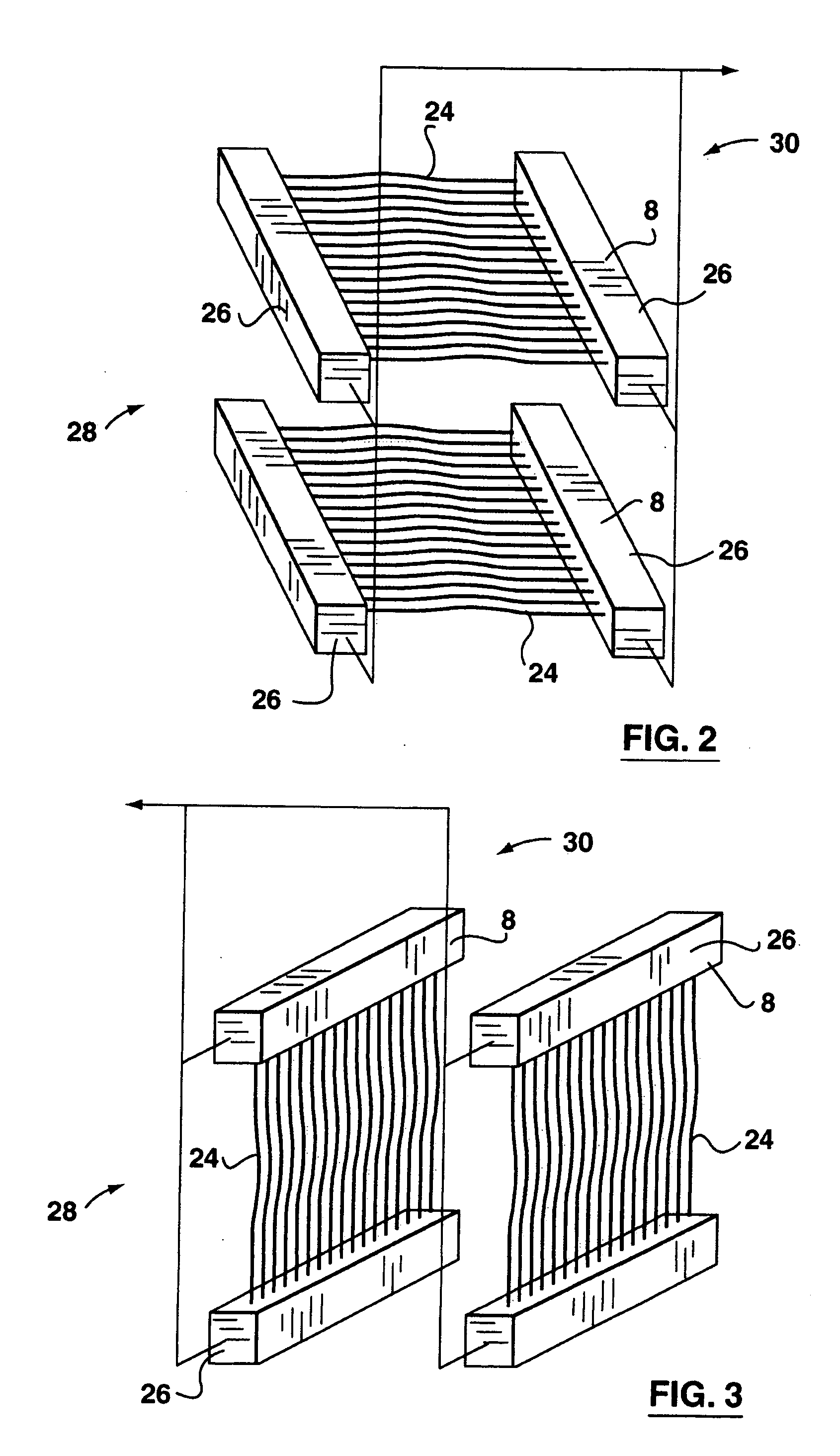Water filtration using immersed membranes
- Summary
- Abstract
- Description
- Claims
- Application Information
AI Technical Summary
Benefits of technology
Problems solved by technology
Method used
Image
Examples
Embodiment Construction
[0036] The general description of membrane units, filtration apparatus elements and of general batch and feed and bleed processes below applies to the other embodiments described further below to the extent that the general description is not inconsistent with the description of any particular embodiment.
[0037] Referring now to FIGS. 1 to 4, a reactor 10 is shown for treating a liquid feed having solids to produce a filtered permeate with a reduced concentration of solids and a retentate with an increased concentration of solids. Such a reactor 10 has many potential applications and may be used, for example, for creating potable, municipal or residential water from a supply of water such as a lake, well, or reservoir, for tertiary filtration of wastewater, or for filtering industrial process water. Such a water supply typically contains colloids, suspended solids, bacteria and other particles or substances which must be filtered out and will be collectively referred to as solids wh...
PUM
 Login to View More
Login to View More Abstract
Description
Claims
Application Information
 Login to View More
Login to View More - R&D
- Intellectual Property
- Life Sciences
- Materials
- Tech Scout
- Unparalleled Data Quality
- Higher Quality Content
- 60% Fewer Hallucinations
Browse by: Latest US Patents, China's latest patents, Technical Efficacy Thesaurus, Application Domain, Technology Topic, Popular Technical Reports.
© 2025 PatSnap. All rights reserved.Legal|Privacy policy|Modern Slavery Act Transparency Statement|Sitemap|About US| Contact US: help@patsnap.com



